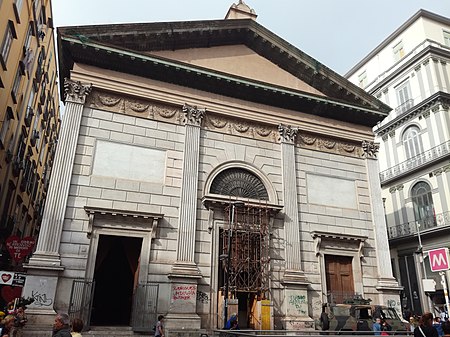Santa Maria delle Grazie a Toledo
17th-century Roman Catholic church buildings in ItalyBaroque architecture in NaplesQuartieri SpagnoliRoman Catholic churches in Naples

Santa Maria delle Grazie is a Roman Catholic church located on Via Toledo, near its intersection with Via Diaz Armando, in central Naples, Italy.
Excerpt from the Wikipedia article Santa Maria delle Grazie a Toledo (License: CC BY-SA 3.0, Authors, Images).Santa Maria delle Grazie a Toledo
Via Toledo, Naples Municipalità 2
Geographical coordinates (GPS) Address External links Nearby Places Show on map
Geographical coordinates (GPS)
| Latitude | Longitude |
|---|---|
| N 40.842672 ° | E 14.248754 ° |
Address
Chiesa di Santa Maria delle Grazie a Toledo
Via Toledo 337;338;339
80134 Naples, Municipalità 2
Campania, Italy
Open on Google Maps











